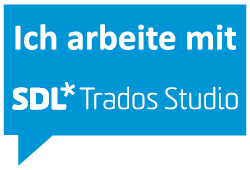Working method:
Client satisfaction is paramount for the translation office IP Translations of Ingo Potthast. We know that it is essential for translations to be accurate and flawless. Therefore, our overriding objective is that we deliver optimal results at the end of the working process.
Our approach is highly structured, and consists of a number of steps that allow for quality assurance. Close consultation and target-oriented communication with clients is central to our work.
The process of translation is divided into the following stages:
1. Firstly, we attach great importance to getting to know the client and their branch - technically accurate translations are not possible without sufficient background knowledge.
2. We undertake a first reading of the source text, and also discuss with the client the possible steps on their side (e.g. text preparation or provision of reference material) that will enable the project to be undertaken smoothly. Good communication with clients is indispensable: The better the coordination, the greater the understanding on both sides of respective working processes, and the better the result. If you want to inform yourself in more detail about the important the contribution you as the client can make to the success of a translation project, we invite you to download our IP Translations Guidelines for Quality Management (PDF).
3. In a subsequent, more detailed review of the source language documents, we identify the intention and target audience of the text on the basis of semantic and grammatical/syntactic aspects. The language style of the original should be emulated as accurately as possible in the translation, although specific adaptations can also be required as a result of cultural differences between the source and destination countries. The cultural context in which a translation is carried out is equally important as the grammar and choice of words.
4. We conduct an analysis of the source text to determine the number of words to be translated, and use this as a basis for a quote for the client
- which includes boththe price of our service and the envisaged date of completion.
5. The translation can begin in earnest when the client agrees to the quote. Thereby, we make use of modern translation technologies in the form of supporting software programs such as Trados, SDL Studio, and Idiom. As a matter of principle, however, we do not use any applications that produce automatic translations. All of our services are based on so-called ‘human translation’.
6. The initial translation is followed by a second complete pass for quality assurance. Here, the text is read through once again in the overall context, as well as comprehensively checked for accuracy according to a range of defined considerations. Again, for a detailed description of quality assurance measures – above all for larger projects – we refer you to our IP Translations Guidelines for Quality Management (PDF).
7. When the translation fulfils our quality requirements, we deliver the target language documents to the client. Often a further review is conducted on the client side so that we can incorporate the client’s suggestions into our translation version, where necessary. When a translation cycle is completed, we place high value on a follow-up discussion, so that both parties may bring forward and discuss aspects which further improve the cooperation.




